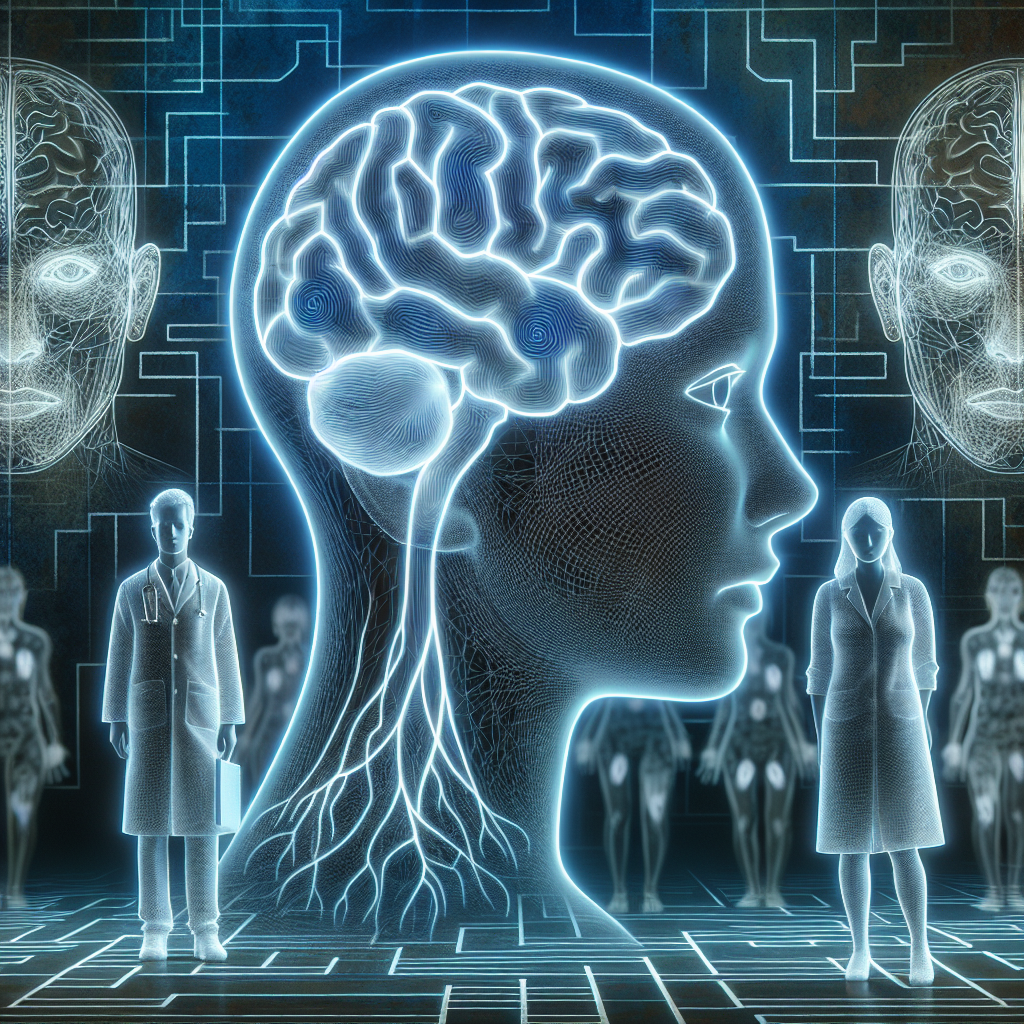
Introduction
In an era where crime rates fluctuate and the criminal justice system seeks innovative solutions, decoding criminal intent emerges as a pivotal theme—one that combines psychology, neuroscience, and law. As society grapples with questions of culpability and moral responsibility, the stakes have never been higher. Enter forensic neuroimaging: a powerful tool that holds the potential to illuminate the enigmatic workings of the human brain. This technology not only offers insights into behavioral patterns but also challenges existing paradigms about guilt and innocence.
Imagine a world where the motivations behind criminal behavior are clear, where courts can ascertain intent with scientific precision. This article, titled "Decoding Criminal Intent: How Forensic Neuroimaging Sheds Light on the Human Brain," will journey through the intricate landscape of criminal psychology, case studies, and the scientific advances that promise to redefine our understanding of the human mind in the context of crime.
Understanding Criminal Intent
What is Criminal Intent?
Criminal intent, or mens rea, refers to the mental element associated with a crime. It encompasses the intentions and state of mind of a perpetrator when committing unlawful acts. Legal systems generally categorize intent into several degrees, such as deliberate, knowing, reckless, and negligent. Understanding these nuances is crucial for effective legal adjudication.
The Importance of Decoding Criminal Intent
The ability to decode criminal intent is essential for various stakeholders—lawyers, judges, mental health professionals, and society at large. Misinterpretations can lead to wrongful convictions or exonerations, highlighting the intricate dance between psychological influences and legal determinations.
Forensic Neuroimaging: An Overview
What is Forensic Neuroimaging?
Forensic neuroimaging involves the use of brain imaging techniques to gather data about a person’s mental state. Tools such as MRI (Magnetic Resonance Imaging), fMRI (functional Magnetic Resonance Imaging), and PET (Positron Emission Tomography) are instrumental in observing brain activity associated with specific thoughts or behaviors.
How it Works
- MRI: Provides static images of brain structures.
- fMRI: Monitors brain function by detecting blood flow changes, allowing researchers to see active brain regions.
- PET: Highlights metabolic processes, offering insights into how neural activity correlates with behavior.
The Science Behind Forensic Neuroimaging
Research in this area is rapidly evolving. Recent studies have demonstrated the potential of neuroimaging to predict violent behavior by revealing abnormal brain activity in offenders. For instance, certain patterns associated with impulsivity or aggression can be visualized, contributing to our understanding of criminal behavior.
Case Studies: Illuminating Criminal Intent
Case Study 1: Brain Scans in Court Litigation
In a groundbreaking legal case, a defendant charged with violent assault underwent fMRI scans that indicated abnormal brain activity in regions associated with emotional regulation. The court allowed this evidence, leading to a reduced sentence. This case illustrates the real-world application of decoding criminal intent and highlights how neuroscience can impact legal outcomes.
Relevance Analysis: This instance underscores the transformative potential of forensic neuroimaging in understanding the psychological factors behind criminal behavior.
Case Study 2: The Neuroscience of Psychopathy
A notorious criminal case involving a psychopath revealed striking patterns in brain scans. Neuroimaging suggested underactivity in the amygdala, linked to emotional processing. Experts utilized this data to argue that the defendant lacked the requisite mens rea for certain charges.
Relevance Analysis: This case emphasizes how forensic neuroimaging can elucidate complex psychological conditions that influence criminal intent.
Case Study 3: Neurological Assessments in Juvenile Offenders
A comprehensive study of juvenile offenders involved utilizing neuroimaging to assess impulsivity and decision-making. The findings indicated that specific neural pathways were less active in younger participants, suggesting developmental factors influencing criminal intent.
Relevance Analysis: Focusing on youth provides critical insights into how neurological development intersects with behavioral outcomes, thereby informing rehabilitative approaches.
The Intersection of Neuroscience and Law
Ethical Considerations
The integration of neuroscience into the legal system raises numerous ethical questions:
- Reliability: How should neuroimaging findings be verified?
- Reductionism: Does it reduce complex human behavior to mere biology?
- Potential for Misuse: Can neuroimaging be employed manipulatively in court settings?
The Legal Framework
The admissibility of neuroimaging evidence varies across jurisdictions. Some courts have embraced this evidence for specific cases, while others remain skeptical due to concerns about its evidentiary reliability.
Future Implications
As technology develops, the potential for forensic neuroimaging to shape legal norms escalates. The challenge will lie in balancing technological advancements with ethical and legal principles, ensuring just outcomes while harnessing the benefits of science.
Challenges and Limitations
Technological Limitations
While promising, forensic neuroimaging isn’t foolproof. Variability in brain function among individuals, potential for misinterpretation, and the limitation of existing imaging technologies pose significant challenges.
Societal Reactions
Public perceptions of relying on neuroscience in legal settings can be mixed. Some fear that it may perpetuate stigma against mental illness, while others welcome it as a step towards a more compassionate legal system.
Table: Comparison of Forensic Neuroimaging Techniques
| Technique | Description | Key Applications |
|---|---|---|
| MRI | Structural imaging of the brain | Detecting brain injuries, observing neural anatomy |
| fMRI | Functional imaging to measure brain activity | Assessing emotional responses, identifying aggression triggers |
| PET | Metabolic imaging to track brain processes | Studying neurodevelopmental disorders, evaluating treatment efficacy |
Conclusion
"Decoding Criminal Intent: How Forensic Neuroimaging Sheds Light on the Human Brain" reveals a captivating intersection of neuroscience and law. As the field evolves, the power of neuroimaging holds promise for understanding intricate human behavior and reshaping our justice system. The potential for science to elucidate motivations behind criminal actions encourages a more informed approach to justice, paving the way for solutions rooted not just in punishment, but in understanding and rehabilitation. The future landscape will undoubtedly be complex but holds the promise of elevating our comprehension of crime and morality.
FAQs
1. What is the primary purpose of forensic neuroimaging in criminal cases?
Forensic neuroimaging aims to provide insights into a defendant’s mental state, potentially clarifying issues of criminal intent that are crucial for legal adjudication.
2. Can neuroimaging be used as definitive proof in court?
While it can provide compelling evidence, neuroimaging alone cannot serve as definitive proof; it must be considered alongside other evidence and expert testimony.
3. How does forensic neuroimaging address the issue of mental illness in defendants?
Neuroimaging can help identify neurological conditions that may impair judgment or impulse control, influencing the assessment of criminal responsibility.
4. What ethical concerns are associated with forensic neuroimaging?
Concerns include the potential for misinterpretation, reducing complex behavior to biological causes, and the implications for privacy and consent.
5. How might future advancements in neuroimaging technology impact the legal system?
Advancements could lead to more accurate assessments of mental states, providing new avenues for understanding criminal behavior and potentially reforming legal standards regarding culpability.
In an ever-evolving landscape, "Decoding Criminal Intent: How Forensic Neuroimaging Sheds Light on the Human Brain" invites readers to ponder the complexities of the human mind and its influence on law, responsibility, and ethical considerations. As we decode the intricacies of criminal intent, we forge a path toward a justice system that is both informed and humane.

















